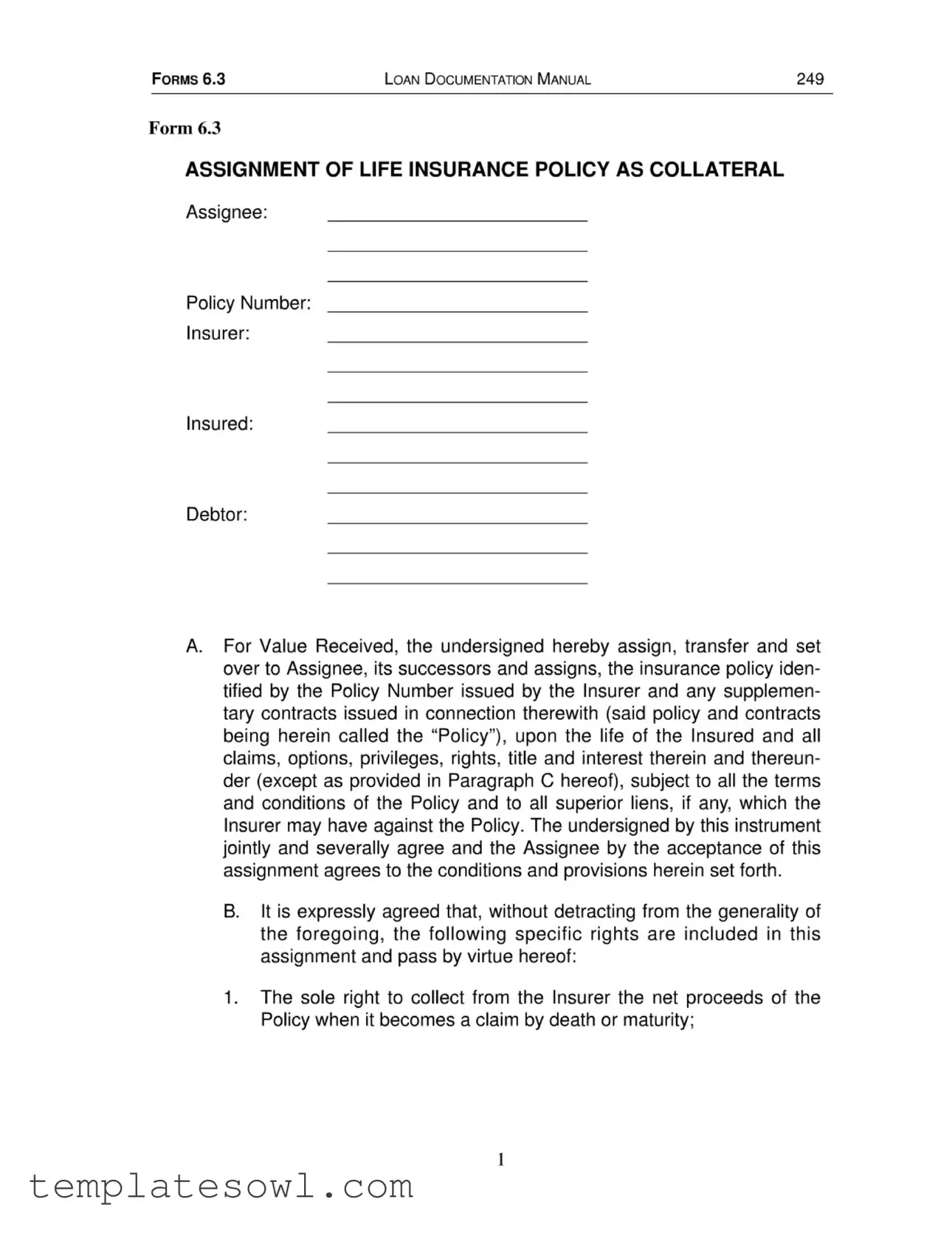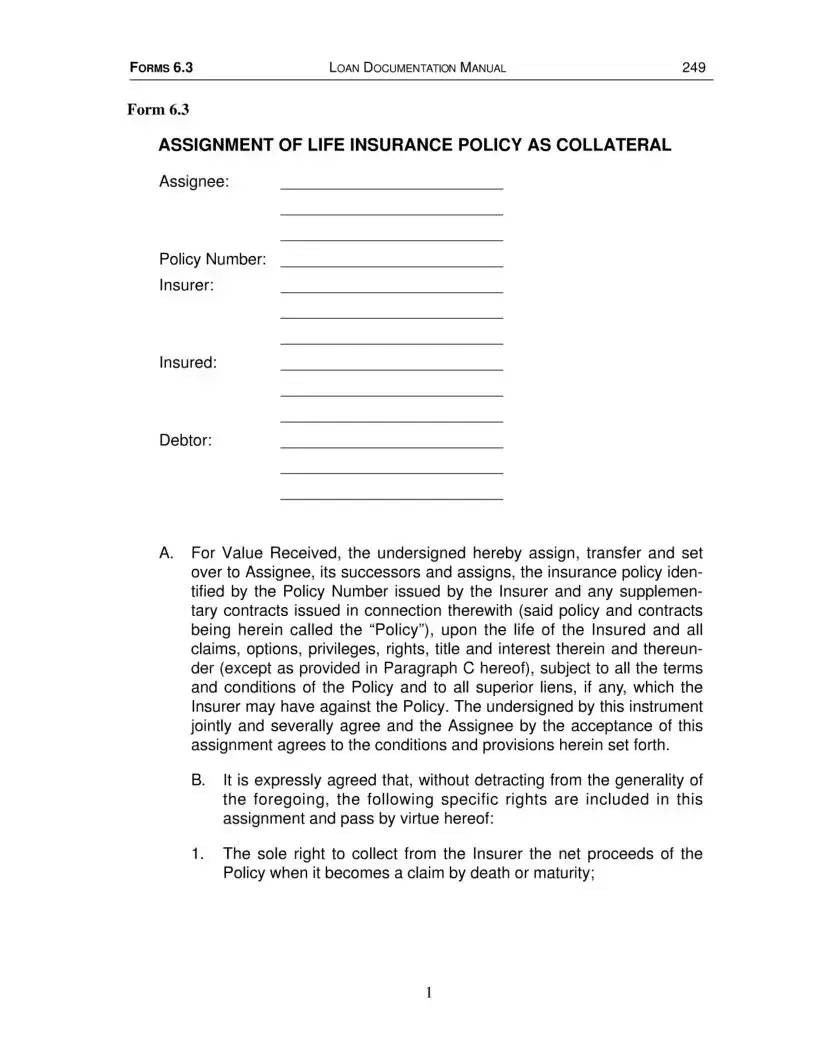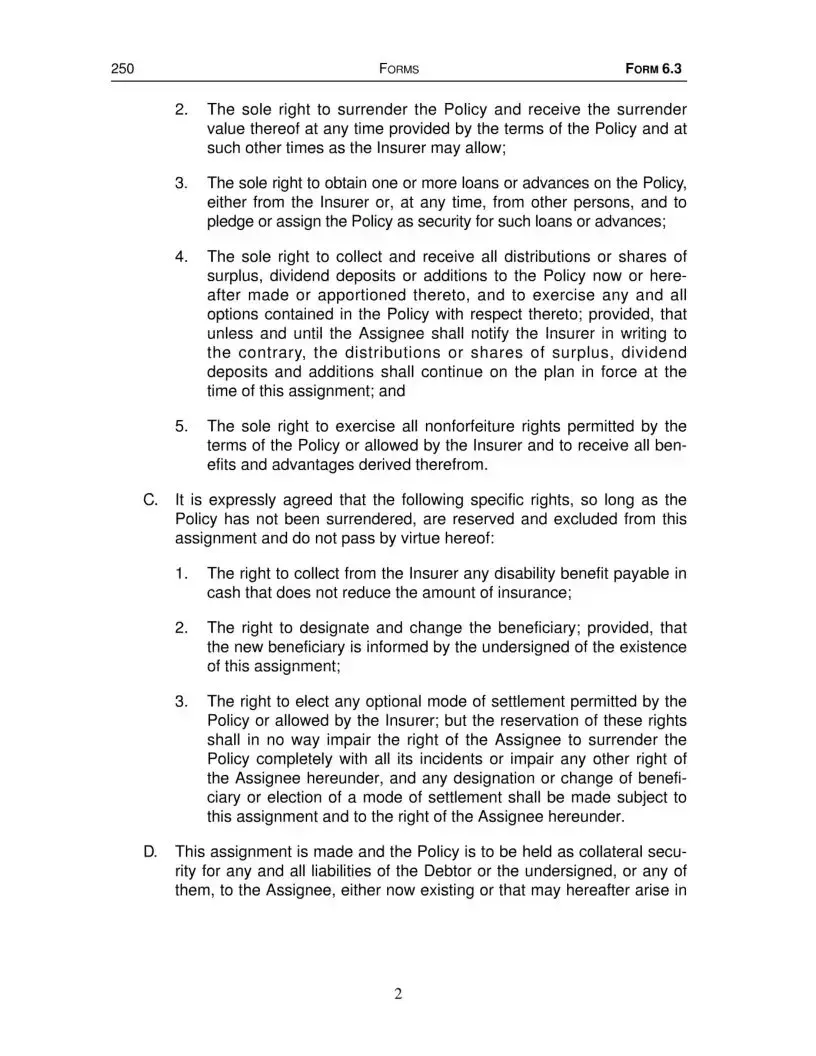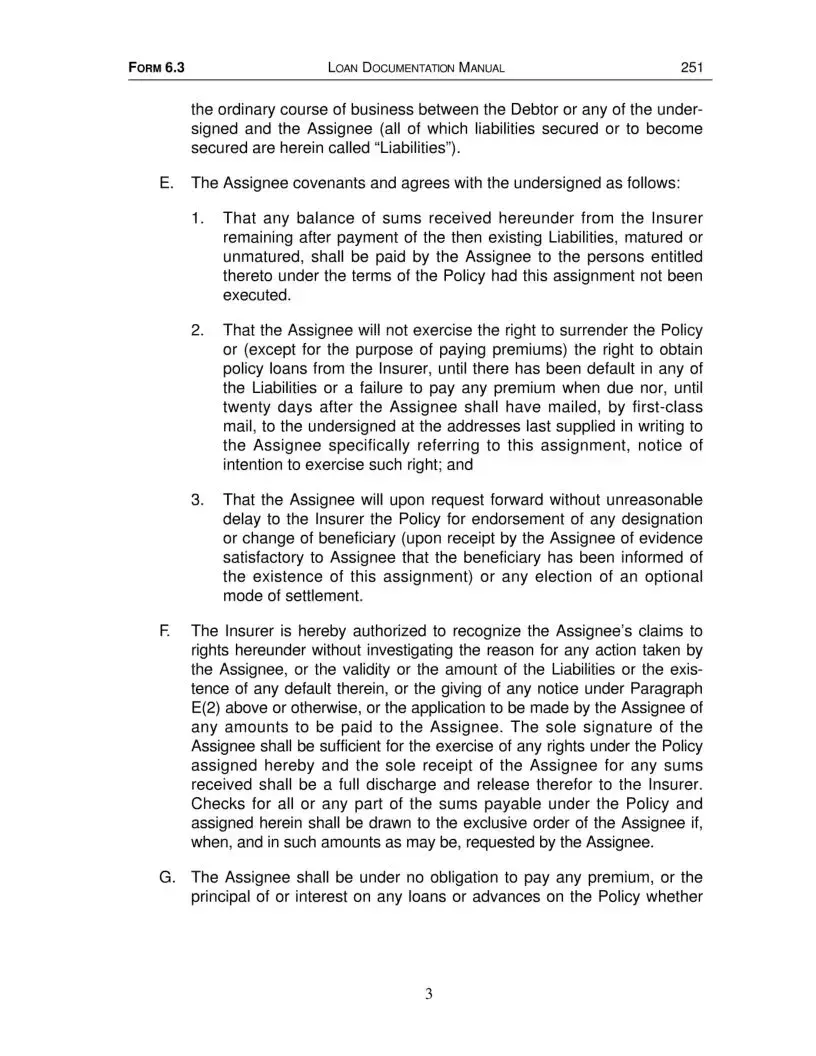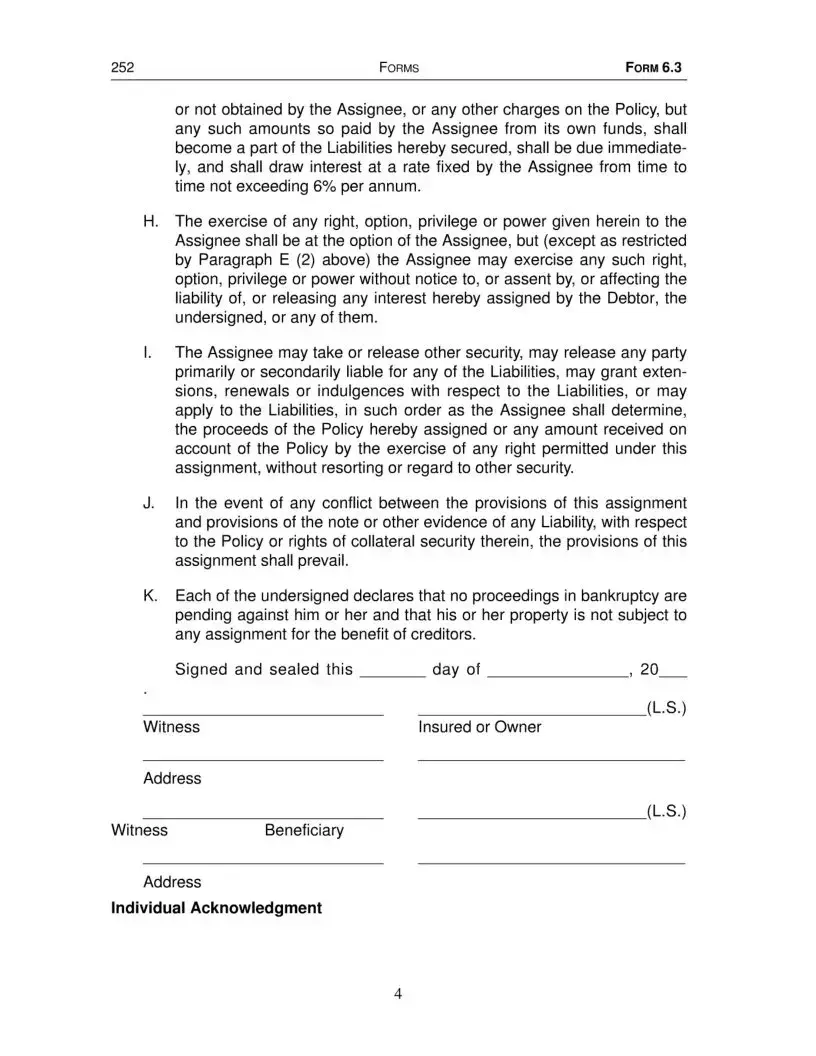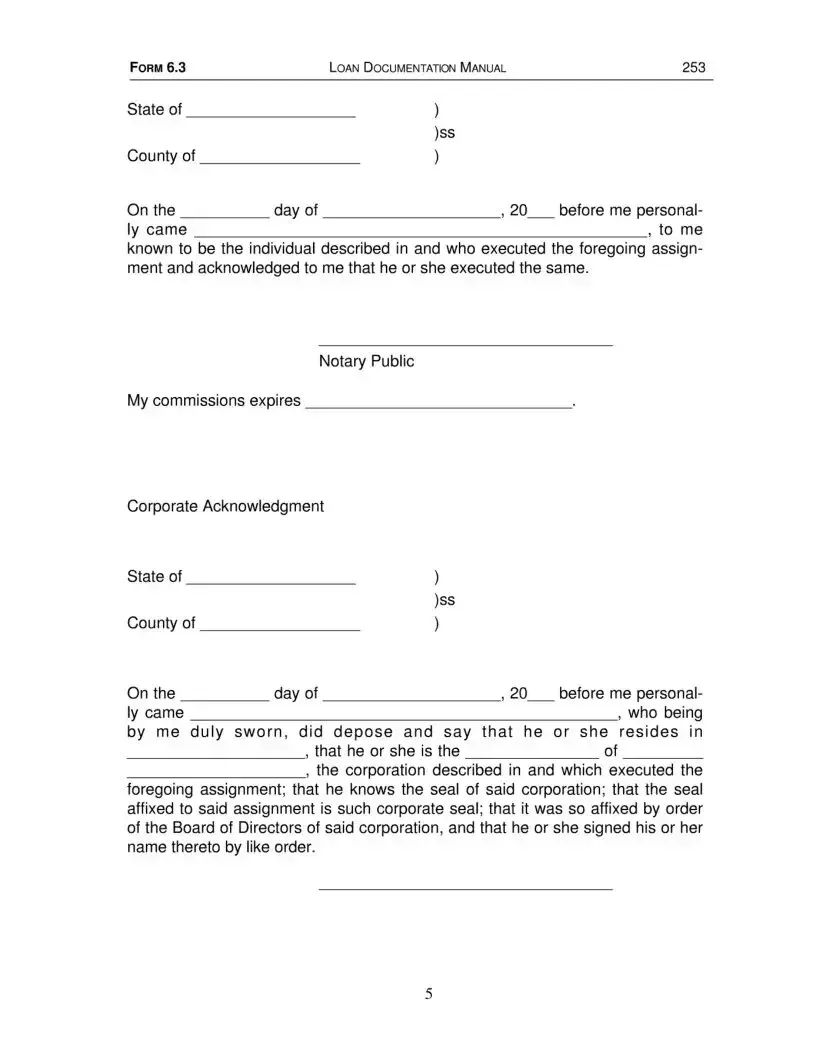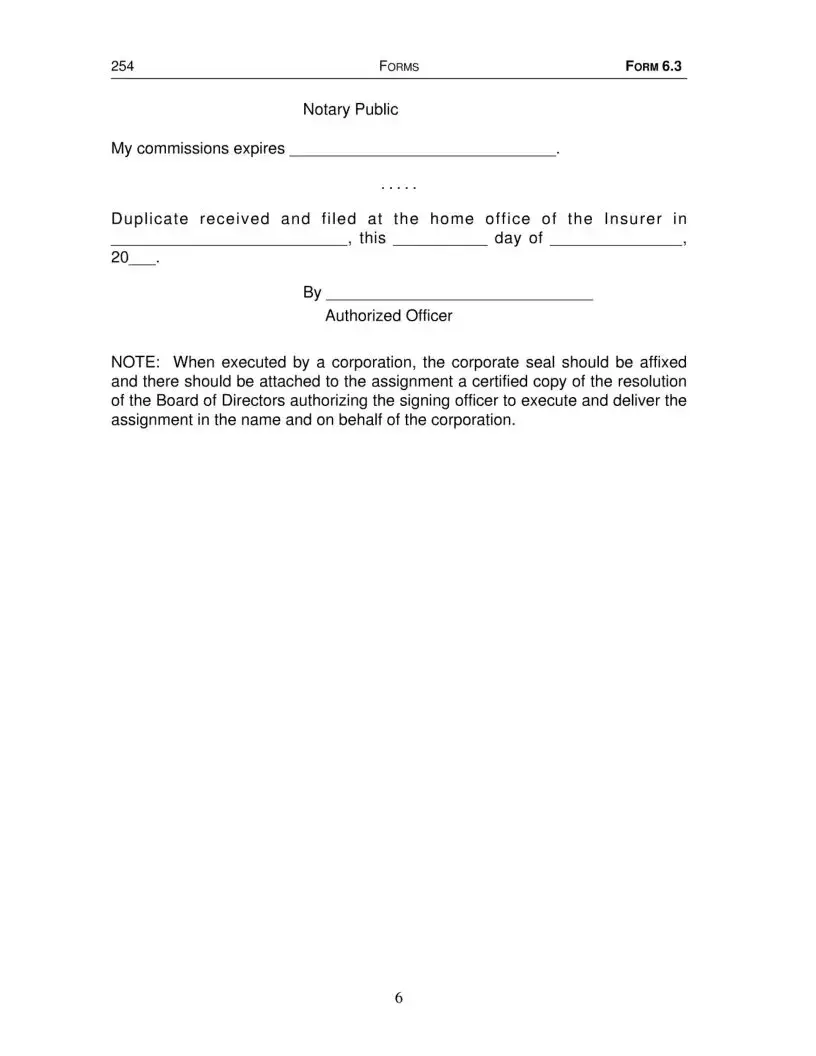What is the purpose of the Blank Free Life Insurance List form?
This form serves as an assignment of a life insurance policy as collateral security. When someone has outstanding liabilities, they can assign their life insurance policy to a lender or assignee, ensuring that the insurer acknowledges this assignment. This gives the assignee certain rights related to the policy in case of default on the liabilities.
Who are the key parties involved in this assignment?
The main parties include the Assignee, who is the entity receiving the assignment (usually a lender), the Insured, who is the individual whose life is covered by the insurance policy, the Debtor, who is the borrower obligated to repay the liabilities, and the Insurer, the company providing the life insurance.
What rights does the Assignee obtain through this assignment?
Upon assignment, the Assignee gains specific rights including the ability to collect proceeds from the life insurance policy upon death or maturity, surrender the policy for its cash value, obtain loans against the policy, and receive distributions related to the policy. However, specific rights are reserved for the policy owner as outlined in the form.
Can the policyholder change the beneficiary after assigning the policy?
Yes, the policyholder can change the beneficiary, but it is required that any new beneficiary be informed of the assignment. Additionally, the right to change the beneficiary is still subjected to the conditions set forth in the assignment.
What happens if the Insured passes away before the debt is paid?
If the Insured passes away before the liabilities are settled, the Assignee is entitled to claim the death benefit from the life insurance policy. The proceeds will first be used to satisfy the outstanding debts and any remaining balance will be distributed according to the policy’s terms.
Are there any rights that the policyholder retains after the assignment?
Indeed, the policyholder retains specific rights after the assignment, such as the right to collect any disability benefits that do not reduce the total insurance amount, and the right to elect settlement options as outlined in the policy. These rights ensure that the policyholder has a degree of control over the policy even after it has been assigned.
What should the Assignee do if they wish to surrender the policy?
The Assignee must wait until there is a default on the liabilities or a failure to pay premiums before exercising the right to surrender the policy. Additionally, they must notify the policyholder in writing of their intention to do so, allowing a twenty-day grace period for compliance.
How does this form accommodate future liabilities?
This form is designed to cover any and all current and future liabilities that may arise in the ordinary course of business between the Debtor and Assignee. It acts as a security agreement that evolves with the financial situation of the parties involved, ensuring ongoing protection for the Assignee.
What is required for the assignment to be legally binding?
For the assignment to be legally binding, it must be signed by the relevant parties and properly acknowledged, often in the presence of witnesses or a notary. It ensures there is a clear record of the agreement and the associated rights without ambiguity.
